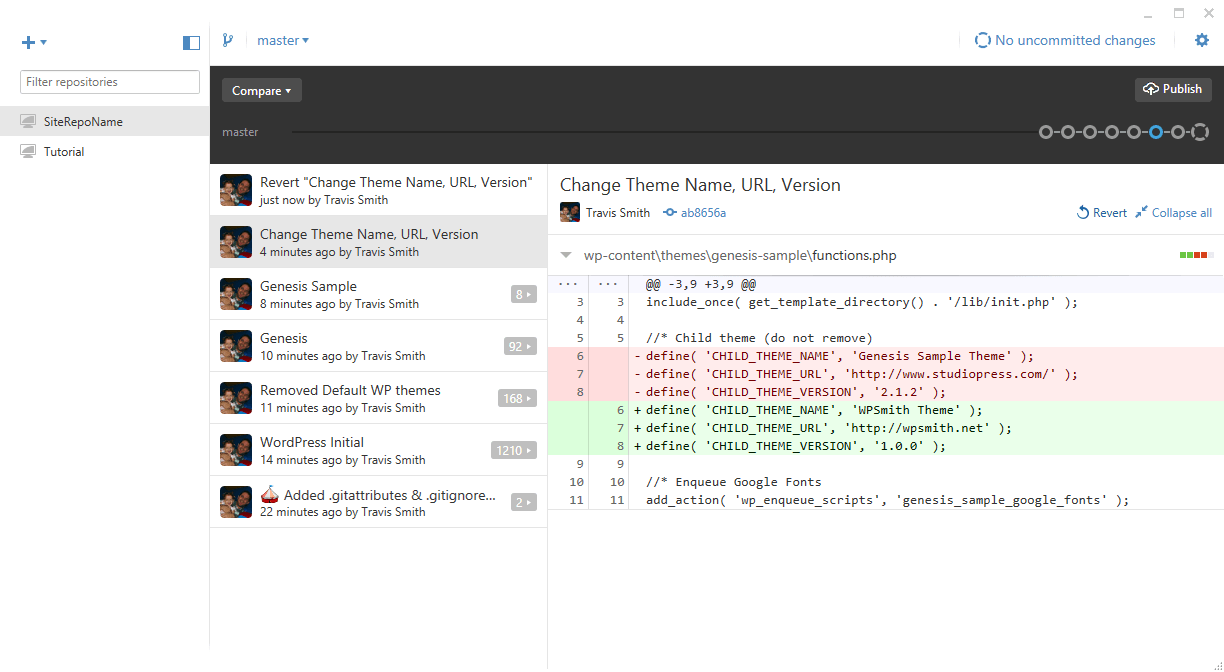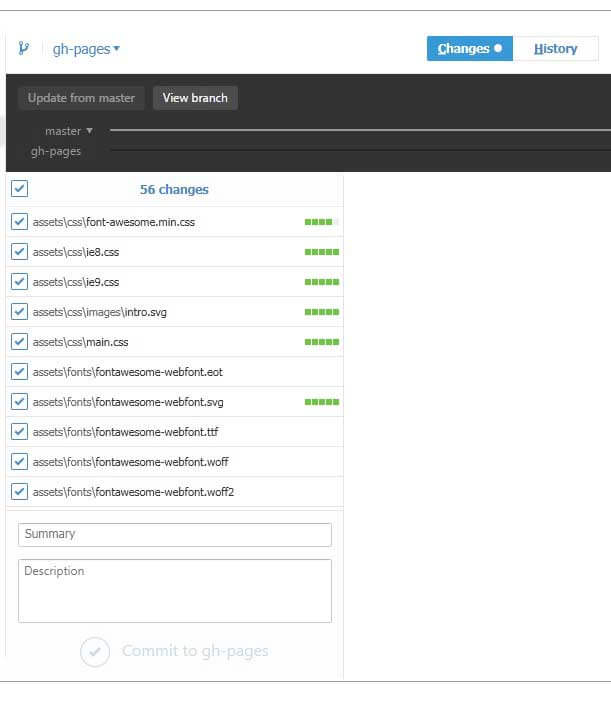


GitHub Platform and Community Improvements GitHub Desktop Improves Merge Conflict Resolution GitHub Desktop 2.0 Introduces Stashing and Rebasing GitHub Desktop 2.8 is available on GitHub now. The final improvement adds native support for Apple Silicon users. You can now check out a new branch from any commit in a projects history and avoid causing problems for the branch you’re working on.Īnother improvement is the ability to amend your last commit rather than having to undo it if you want to make a small change. The GitHub Desktop team says this will be useful when developers need to check out an older version of a project to investigate a bug or create a hotfix on top of the latest release. The second change of note is the option to start a new branch from an earlier commit. Were now ready to commit our project for the first time. There's also the option to squash and rebase when you merge as part of the operation, and commits can be dragged and dropped to make the history of the project clearer and easier to follow. The process of saving a set of changes to git is known as a commiting. If a group of commits represents a single unit of work, or if a project requires that each pull request only has one commit, you can now drag them on top of one another to squash them together and add a new commit message to summarize the overall changes. The thinking behind the change is that developers use their commit history to tell a coherent story about the progression of their project. The headline improvement to this release is the ability to squash and reorder commits. 'more of Git in it so you can focus on what matters'. The developers say the latest release has:

Recent updates have added support for cherry-picking and introduced drag and drop.

#Github desktop commit for mac
GitHub Desktop was designed to replace GitHub for Mac and Windows with a unified experience across both platforms. GitHub Desktop gives developers a way to work with workflows in a desktop environment. This ensures you do not lose data due to not saving or due to power failures.GitHub Desktop has been updated and now has expanded support for drag and drop to allow you to squash and reorder commits in your history, amend previous commits, and start new branches from earlier commits.
#Github desktop commit code
Make sure your source code is also synced with a cloud service like dropbox or you are using Colab. # create a new branch to work on a feature # you want your new feature to use the master as the base # switch to master branch and merge all changes Otherwise changes you make locally could create issues while merging (pushing your code upstream). About tags in GitHub Desktop GitHub Desktop allows you to create annotated tags. Git remote add upstream your-remote-parent-urlĪlways, always and always fetch any changes from the upstream (parent) repository. You can use GitHub Desktop to create, push, and view tags. Undoing a Specific Commit (That Has Been Pushed) In your terminal (Terminal, Git Bash, or Windows Command Prompt), navigate to the folder for your Git repo. Git set remote-url origin your-remote-fork-url Finally, set the original repository (the one you cloned from) as your upstream. You can also add a co-author on any commits you collaborate on. Next access your remote fork’s url and clone it and set this remote url as the origin to push changes to. When you make a commit, you must include a commit message that briefly describes the changes. 3.1.1 Setting up a local repository from a remote oneįirst fork the upstream repository.


 0 kommentar(er)
0 kommentar(er)
